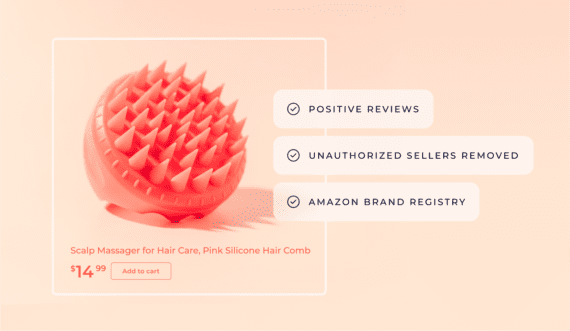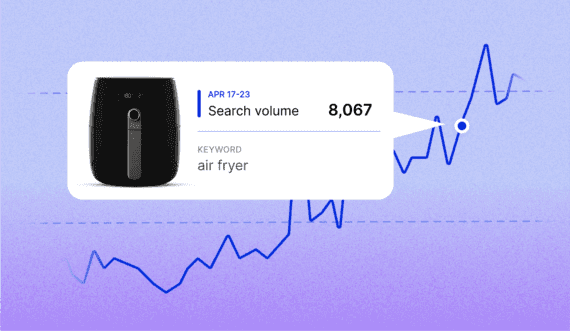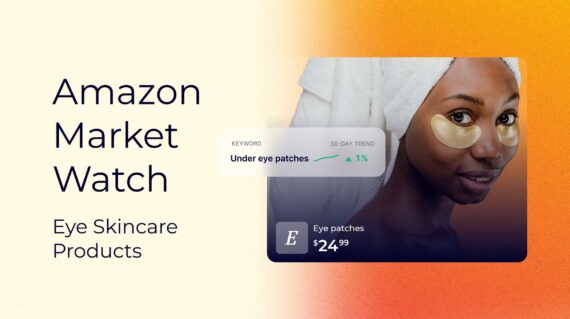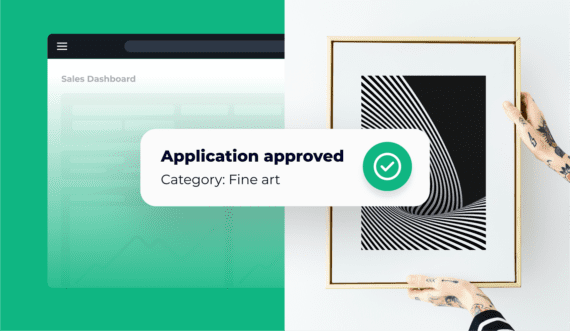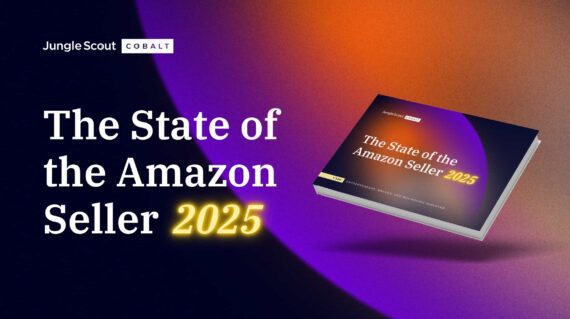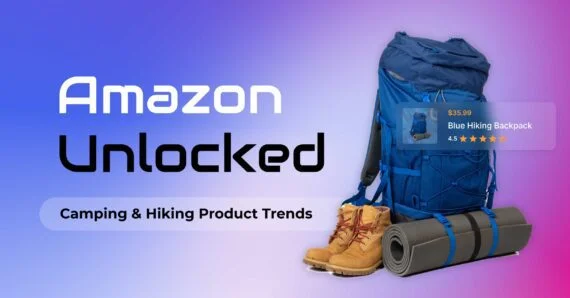Content
expand_moreEcommerce underwent an incredible surge in 2020 as consumers shifted from shopping in-store to online. By the end of the year, 74% of consumers believed the majority of consumer shopping would happen online in the future — up from 69% just months earlier. This and other trends indicate that 2021 holds immense potential for ecommerce entrepreneurs.
In order to provide all the information sellers need to succeed with their Amazon ventures—from launch, to first sale, to growth and scaling—we’ve updated our content for 2021.
Interested in starting an ecommerce business? Our guide to selling on Amazon will teach you everything you need to know.
You do not need to be living in the U.S. to be eligible to sell on Amazon’s U.S. store.
In fact, of Amazon’s 2.4 million third-party sellers worldwide, 83% sell in the U.S. marketplace — and 51% aren’t even located in the U.S.
If you’re interested in becoming a seller on Amazon’s U.S. platform, but don’t live in America, this article will teach you all you need to know to get started.
4 reasons you should sell on Amazon U.S.
1. Amazon U.S. is the largest of Amazon’s marketplaces
Amazon’s U.S. site (Amazon.com) is the largest e-commerce site in the world. With more than 3 billion unique visitors monthly, Amazon.com sees nearly three times the monthly traffic as the next largest global e-commerce site, eBay.
Amazon’s U.S. site also boasts the following advantages over its international counterparts:
- Amazon U.S. has more than 142 million Prime members
- Amazon U.S. hosts around 350 million product listings—including 12 million sold by Amazon itself
- 64% of Amazon U.S. sellers have earned more than $25,000 in profits throughout the lifetime of their businesses
- 70% of Amazon U.S. sellers earn more than $1,000 per month in revenue
2. It’s easier to sell in the U.S. than in the EU
The only other Amazon marketplace that comes close to Amazon.com in size is the combined European Amazon network. However, the EU has a few more obstacles to overcome to start selling on their platform.
For example, EU sellers have to account for Value Added Tax (VAT). In the U.S., sellers collect sales tax from shoppers, which is applied after a sale is made.
However, in the EU, sellers have to add VAT earlier in the supply chain. As an added cost of goods sold, this makes pricing products competitively in the EU a little more difficult.
In addition, products sold in the EU have to cater to more than just English speakers. In the U.S., most sellers list their products in English only.
The EU, on the other hand, has marketplaces in Spain, Germany, France, Italy, the Netherlands, and the UK. This means that their products and listings must be readable in as many as six different languages. (Of course, accommodating a broader range of languages is more inclusive and may help you reach new and different consumers; it just happens to take some additional time and effort.)
3. Amazon offers Fulfillment by Amazon (FBA)
Fulfillment by Amazon is a program that allows Amazon’s sellers to send and store their inventory to store in Amazon’s warehouses. Once a sale is made, Amazon’s employees pick, pack, and ship the goods on behalf of the sellers.
Although this service is available in every country with an Amazon marketplace, it’s important to note the convenience it offers international sellers.
Without FBA, international sellers would have to ship their own goods overseas to their customers, or find third-party fulfillment options, which could be highly expensive and time-consuming.
4. A seller can start selling on Amazon U.S. with few obstacles
There are very few barriers to entry to start selling on Amazon. In fact, 54% of sellers who sell in the Amazon U.S. marketplace had their businesses up and running in fewer than three months.
In addition, 64% of U.S. sellers realized a profit on Amazon in less than a year.
Which countries can sell on Amazon U.S.?
Currently, Amazon U.S. accepts sellers from 102 countries around the world. You can view the entire list of accepted countries in Amazon’s help center.
According to Amazon, to be able to sell from one of the countries listed, a seller will need to have proof of residence in their home country as well as a valid phone number and internationally chargeable credit card.
How do I get started selling on Amazon U.S.?
First, make sure you have the following information handy:
- A valid credit card
- Internationally chargeable credit card
- Bank account (if you’re unable to open a U.S. bank account, you may need to use Amazon’s Currency Converter for sellers which will allow you to sell on Amazon without opening a U.S. bank account)
- Phone number
- Proof of residence
- Tax information
After you have all the information you need to create your Amazon seller account, go to sellercentral.amazon.com and click ‘Register now.’
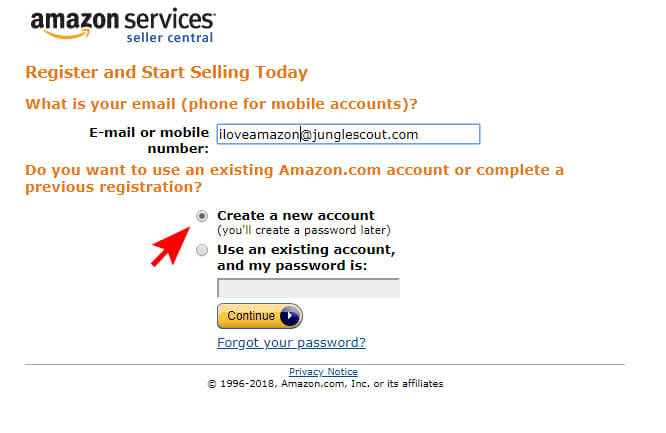
In addition to the basic information mentioned above, seller candidates must complete an online step-by-step interview to determine whether or not they will need to fill out a W9 (as a U.S. taxpayer) or a W-8BEN (non-U.S. taxpayer).
It may take up to 72 hours for Amazon to review your application and give you permission to sell on Amazon. Sometimes, they may require additional information from you. Be sure to follow up with whatever Amazon needs in a timely manner.
Choose your business model
You may already have an idea of what products you’d like to sell, but if you don’t, there are great ways to learn high-demand, low-competition product opportunities in the U.S. market.
After Amazon approves you as a seller in the U.S. marketplace, you will first need to determine which business or sales model you plan to use.
These are the three most popular business models for international Amazon U.S. sellers:
- Private Label: Creating your own brand/label in order to manufacture your own products. While it is somewhat more involved than the other business models, it’s by far the most popular; 67% of all Amazon sellers are private label sellers.
- Wholesale: Purchasing bulk goods to resell on Amazon. Unlike private label, where a seller must create their own brand, the products wholesalers sell are created by other brands/companies.
- Dropshipping: Promoting and selling products offered by another supplier or manufacturer. When the sale is made, the dropshipper pays the supplier/manufacturer to ship the products on their behalf.
While other business models exist, logistically, these three are the easiest since they all require little to no handling on your part. You can sell these types of products on Amazon without ever actually seeing the inventory yourself.
Conversely, business models like retail arbitrage require you to source the products in person, then ship those goods to Amazon — this could end up being costly.
Amazon product research
1. Perform a search on Amazon for a product opportunity. If you are unsure of what to search for, use Jungle Scout’s Opportunity Finder to help you locate killer product ideas.
2. Make sure that the product opportunity meets the following recommended criteria (the Jungle Scout Extension will help validate this information):
- High demand. We recommend products that sell 200-300 units per month.
- Low competition. Look for products whose top 10 sellers have less than 100 reviews/ratings on Amazon.
- Lightweight/easy-to-ship. To save on shipping costs (both importing and shipping to the customer), make sure the product isn’t too heavy or too large.
- No legal issues. Make sure that the product isn’t patented. Last thing you want as a new business owner is an intellectual property lawsuit on your hands!
3. Make sure you can source the product. Once you have a product that you’re interested in selling on Amazon, make sure you can source it. Use Jungle Scout’s Supplier Database or Alibaba to find a manufacturer or supplier.
Create an Amazon listing
In order to receive the shipping destination and FBA warehouse that you will be sending the product to you will have to create your listing on Amazon. While creating the perfect listing on Amazon is an art and science unto itself, here are some basics:
- Make sure you have great images. Your product’s image is the first thing the customer sees, so you want to make sure that it’s an accurate representation of your product and brand.
- The title should be informative and SEO friendly. Your title serves two functions. First, it lets Amazon’s search engine algorithm know what your product is so it can properly place it in their catalog. Second, it tells the customers all of the important information that you want them to know about your product.
- Implement lots of great descriptions. While this may not be as important as your photos and titles, the bullet points and descriptions help convert those customers who are still on the fence after clicking. And if you can get your product registered through Amazon’s brand registry, you can use A+ content as well.
Choose a customs broker
In order to import your item into the U.S., you will need a customs broker to get your product into the country (unless you ship via air like UPS, DHL, or FedEx, in which case it is included as a service).
Your customs broker will guide you through the exact process of clearing your shipment, including the requisite paperwork, documentation, taxes, and more. This is perhaps the least enviable aspect of selling on Amazon’s U.S. store, but something that all importers have to go through.
We recommend using a customs broker like Flexport, which handles all the customs, freight forwarding, and inventory storage for you. You can find alternative customs brokers with a quick Google search for contact details and reviews.
Here are some services that a good customs broker can provide:
Checking samples
Your customs broker can check your samples for you and let you know whether or not they are the exact products you specified when sourcing from your supplier.
1. Quality assurance
Similar to checking samples, your customs broker can review the quality of your products. There are also third-party quality assurance companies that can inspect and grade the products before they reach Amazon’s fulfillment centers.
These companies can check the quality during production as well, which allows you to address any major production issues early in the process.
2. Fulfillment prep centers
Before Amazon can receive your inventory, your products must be prepped, which includes having FNSKUs and other proper labeling.
In addition, if your product requires assembly not possible from your supplier, a third-party fulfillment prep center can assist with this. All of this can help you avoid additional fees from Amazon.
3. Storage
Amazon charges two kinds of fees for storage: monthly and long-term. So, if you have products that sell slowly, those fees can add up, especially if those products are oversized. Not to mention, Amazon provides storage limits for sellers based on their inventory health.
In either circumstance, you might consider storing your products with your custom broker if that’s a service they offer.
Start selling on Amazon U.S. now
Bottom line: Amazon is a great opportunity to start a business. And if you’re going to sell on Amazon, definitely sell in the U.S.
Although there may be a few easy-to-overcome obstacles for you to consider as a non-U.S. resident, once you’re past them, the benefits can’t be beat. You’ll have access to Amazon U.S.’s 2 billion monthly customers, extensive fulfillment network, and powerful research data.
Get started today!
Start selling on Amazon.
Learn more about how you can use Jungle Scout to launch, grow, and run your Amazon business.
Dave Hamrick is an entrepreneur and has been an Amazon seller since 2015. He shares his Amazon sales knowledge as a professional writer and social media influencer. Dave lives in Norman, Oklahoma with his wife, Tracy, son, Jack, and a whole mess of pets.



